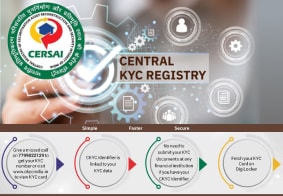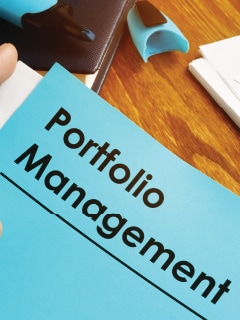CKYC Registry
-
Customer Service Contact us Service request Locate a branch
Find all the help you need
Scan the QR, get our app, and find help on your fingertips

Help CenterSupport topics, Contact us, FAQs and more
-
Login
Are you ready for an upgrade?
Login to the new experience with best features and services
-
Login
Are you ready for an upgrade?
Login to the new experience with best features and services
- Accounts
-
Deposits
IDFC FIRST Bank Deposits
View all Deposits -
Loans
IDFC FIRST Bank Loans
View all Loans - Wealth & Insure
-
Payments
IDFC FIRST Bank Payments
View all Payments -
Cards
IDFC FIRST Bank Cards
View all Cards - Blogs
- Corporate Account
-
Cash Management Services
IDFC FIRST Bank Cash Management Services
View all Cash Management Services - Supply Chain Finance
-
Corporate Lending
IDFC FIRST Bank Lending
View all -
Treasury
IDFC FIRST Bank Treasury
See more details - NBFC Financing
Support topics, Contact us, FAQs and more
- IDFC FIRST Bank Accounts
-
Savings Account
-
Corporate Salary
Account -
Senior Citizens
Savings Account -
First Power
Account -
Current Account
-
NRI Savings
Account -
TASC Institutional
Account -
Savings Account
Interest Calculator
- IDFC FIRST Bank Deposits
-
Fixed Deposit
-
Recurring Deposit
-
NRI Fixed Deposit
-
Safe Deposit Locker
-
FD Calculator
-
RD Calculator
- IDFC FIRST Bank Loans
-
Personal Loan
-
Consumer Durable
Loan -
Home Loan
-
Business Loan
-
Professional Loan
-
Education Loan
-
New Car Loan
-
Pre-owned Car Loan
-
Two Wheeler Loan
-
Pre-owned Two
Wheeler Loan -
Commercial Vehicle
Loan -
Gold Loan
-
Loan Against Property
-
Loan Against Securities
-
Easy Buy EMI card
-
Personal Loan
EMI Calculator -
Education Loan
EMI Calculator -
Home Loan
EMI Calculator
- IDFC FIRST Bank Wealth & Insure
-
FIRST Select
-
FIRST Wealth
-
FIRST Private
-
Mutual Funds
-
Sovereign Gold Bond
-
Demat Account
-
Term Insurance
-
Life Insurance
-
Health Insurance
-
General Insurance
-
Bonds
-
Loan Against
Securities -
Portfolio Management
Service
- IDFC FIRST Bank Payments
-
FASTag
-
Credit Card
Bill Payments -
UPI
-
Funds Transfer
-
Forex Services
-
Pay Loan EMI
- IDFC FIRST Bank Cards
-
Ashva :
Metal Credit Card -
Mayura :
Metal Credit Card -
FIRST Millennia
Credit Card -
FIRST Classic
Credit Card -
FIRST Select
Credit Card -
FIRST Wealth
Credit Card -
FIRST WOW!
Credit Card -
Deals
-
Debit Cards
-
Co-branded Cards
-
Credit Card
EMI Calculator -
FIRST Corporate
Credit Card -
FIRST Purchase
Credit Card -
FIRST Business
Credit Card
- Premium Metal Credit Cards
-
AshvaLifestyle1% Forex₹2,999
-
MayuraLifestyleZero Forex₹5,999
-
FIRST PrivateInvite Only
- Best for travellers
-
MayuraZero ForexMetal₹5,999
-
Ashva1% ForexMetal₹2,999
-
FIRST WOW!Zero ForexTravelLifetime Free
-
FIRST SWYPTravel OffersEMI₹499
-
FIRST Select1.99% ForexLifestyleLifetime Free
-
FIRST Wealth1.5% ForexLifestyleLifetime Free
-
Club VistaraTravelLifestyle₹4,999
-
IndiGo IDFC FIRST Dual Credit CardTravelLifestyle₹4,999
- Max benefits, Free for life
-
FIRST Classic10X RewardsShoppingNever Expiring Rewards
-
FIRST Millennia10X RewardsShoppingNever Expiring Rewards
-
FIRST Select10X RewardsLifestyle1.99% Forex
-
FIRST Wealth10X RewardsLifestyle1.5% Forex
-
FIRST WOW!RewardsTravelZero Forex
-
LIC ClassicRewardsInsuranceShopping
-
LIC SelectRewardsInsuranceShopping
- Reward Multipliers
-
AshvaLifestyleMetal₹2,999
-
MayuraLifestyleZero Forex₹5,999
-
FIRST ClassicNever Expiring RewardsShoppingLifetime Free
-
FIRST MillenniaNever Expiring RewardsShoppingLifetime Free
-
FIRST SelectNever Expiring RewardsLifestyleLifetime Free
-
FIRST WealthNever Expiring RewardsLifestyleLifetime Free
- Rewards & Credit on UPI
-
FIRST Power+FuelUPI₹499
-
FIRST PowerFuelUPI₹199
-
FIRST EA₹NVirtual1% Cashback₹499
-
FIRST DigitalVirtualUPI₹199
-
IndiGo IDFC FIRST Dual Credit CardUPITravelDual cards
- Fuel and Savings
-
FIRST PowerRewardsUPI₹199
-
FIRST Power+RewardsUPI₹499
-
LIC ClassicRewardsInsuranceShopping
-
LIC SelectRewardsInsuranceShopping
- Express and Flaunt
-
AshvaMetal1% Forex₹2,999
-
MayuraMetalZero Forex₹5,999
-
FIRST SWYPEMIOfferMAX₹499
-
FIRST MillenniaRewardsShoppingLifetime Free
- FD Backed rewarding Credit Cards for all
-
FIRST EA₹NVirtualCashback₹499
-
FIRST WOW!Zero ForexTravelLifetime Free
-
CreditPro Balance TransferTransfer & SaveReduce InterestPay Smartly
- IDFC FIRST Bank NRI Forex Solutions
-
Send money to India-Wire transfer
-
Send money to India-Digitally
-
Send money abroad
-
Max Returns FD (INR)
- IDFC FIRST Bank MSME Accounts
-
Platinum Current
Account -
Gold
Current Account -
Silver Plus
Current Account -
Merchant Multiplier
Account -
Agri Multiplier
Account -
TASC Institutional
Account -
Dynamic Current
Account -
World business
Account -
First Startup
Current Account
- IDFC FIRST Bank Business Loans
-
Business Loan
-
Professional Loan
-
Loan Against Property
-
Business Loan for Women
-
Working Capital Loan
-
Construction Equipment Loan
-
Machinery Loan
-
Healthcare Equipment Loan
- IDFC FIRST Bank Business Solutions
-
Payment Solutions
-
Tax Payments
-
Doorstep Banking
-
Point of Sale (POS)
-
Escrow Accounts
-
NACH
-
Payment Gateway
-
UPI
-
Virtual Accounts
-
As per amendment in the Income Tax Rules, PAN or Aadhaar are to be mandatorily quoted for cash deposit or withdrawal aggregating to Rupees twenty lakhs or more in a FY. Please update your PAN or Aadhaar. Kindly reach out to the Bank’s contact center on 1800 10 888 or visit the nearest IDFC FIRST Bank branch for further queries.
-
-
Most Searched
Sorry!
We couldn’t find ‘’ in our website
Here is what you can do :
- Try checking the spelling and search
- Search from below suggestions instead
- Widen your search & try a more generic keyword
Suggested
Get a Credit Card
Enjoy Zero Charges on All Commonly Used Savings Account Services
Open Account Now
Finance
Learning how to invest? Make sure to avoid these 5 mistakes
Key Takeaways
When you are learning how to invest, it is important to make an investment strategy that matches your financial needs and goals.
Some common mistakes made by beginners include lack of research, thinking short-term, and not diversifying your portfolio.
Not understanding your risk appetite can also cause you to take the wrong approach towards your investment strategy.
Take professional help in your initial investment journey to understand the complexities of investing.
Want to start your investment journey but confused about where to begin? You are not alone.
While strategic investment is the key to financial security, learning how to invest effectively can be overwhelming for beginners. With so many complex terms, endless options, and potential risks, it’s easy to feel anxious about making a mistake – after all, no one wants to see their hard-earned money disappear because of one wrong move.
Lucky for you, you can learn how to make a goal-oriented investment strategy by understanding and avoiding these five common mistakes new investors make. Find out common pitfalls that stump beginners and learn how to invest better with this guide.
Common investment mistakes to avoid
Given below are the five biggest investing mistakes that can cause your investment strategy to backfire when you begin your journey of learning how to invest –
1. Lack of research or understanding
Multiple investment options are available in the market, each with specific features and benefits. With so many options available, choosing something that does not align with your financial goals or risk appetite is very easy. A common mistake made by beginners learning how to invest is going for an investment avenue without proper research.
The right way
Warren Buffet has said, “Never invest in a business you cannot understand”. He emphasises the importance of research and knowledge before making investment decisions. After all, it is your hard-earned money!
As you learn how to invest, research the product before investing money in it. Here are some things to find out before you invest –
- Features and benefits of the investment avenue, including how the investment works
- Minimum and maximum investment tenure
- Risks involved, i.e., how risky the investment is
- Expected returns, i.e., whether you get assured returns or whether the returns are dependent on market movement
- Liquidity, i.e., how easily can you convert the investment into cash when needed
- Tax benefit on the investment made and the returns earned, i.e., whether you are eligible for any tax deductions
For instance, if you want to invest in fixed deposits (FDs), understanding the tenure available and the liquidity of the deposit is very important. You should also be aware of the expected returns, minimal risk of volatility, and tax benefits.
For instance, if you choose 5-year FDs offered by banks and post offices, you can save tax under Section 80C on the invested amount. However, the return potential of FDs is limited. Even if the equity market is performing well, you will only get a fixed return from your FD.
Similarly, it is important to understand the ins and outs of different investment avenues and choose assets that align with your investment strategy.
2. Myopic investing horizon
Having a myopic investing horizon is another common mistake made by beginners learning how to invest. When it comes to investing, the longer your investment horizon, the better. Short-term investing or focusing on short-term returns is a mistake. Unless you have to save for short-term goals, do not look for returns or redemptions within a short period of time, especially when you invest in market-linked instruments which are volatile.
The right way
Warren Buffet has said, “No matter how great the talent or efforts, some things just take time.” The same holds true when you’re learning how to invest. While making diverse strategic investments is important, so is allowing them the time needed to reap returns.
Give your savings time to grow. With compounding of returns, your savings can multiply over time. In fact, the longer you stay invested, the better the returns you can earn.
Here’s a quick example of how a difference of five years can affect your investment corpus –
Case 1 |
Case 2 |
Case 3 |
Investment amount - ₹10,000/month |
Investment amount - ₹10,000/month |
Investment amount - ₹10,000/month |
Assumed interest rate - 12% p.a. |
Assumed interest rate - 12% p.a. |
Assumed interest rate - 12% p.a. |
Investment tenure - 15 years |
Investment tenure - 20 years |
Investment tenure - 25 years |
Corpus after 15 years - ₹49.96 lakhs (rounded off to the nearest thousand) |
Corpus after 20 years - ₹98.93 lakhs (rounded off to the nearest thousand) |
Corpus after 15 years - ₹1.88 crores (rounded off to the nearest lakh) |
3. Playing favourites with investment avenues
You might have a favourite colour, choice of food, holiday destination, or even a friend. But when you’re figuring out how to invest your money wisely, playing favourites is counterproductive. Investing in one or two asset classes can be detrimental to your returns.
For instance, if you invest only in FDs, you might be losing out on the return potential of the equity market. On the other hand, if you only prefer equity, short-term volatility might wipe out your savings.
The right way
Ever heard the saying – don’t put all your eggs in one basket? The same rule applies to investing.
Diversification is the name of the game. It means putting your savings in different types of investment avenues to minimise risks while maximising the return potential. For instance, if you invest in FDs, equity, and gold, you can enjoy the stability of FDs, the return potential of equity and the capital growth of gold.
Just like a balanced meal contains different portions of nutrients, a balanced portfolio should contain different types of investments. Choose investments across different asset classes, including equity, debt, gold, etc.
Here are some options to consider with their pros and cons –
|
Equity investments |
Debt investments |
Others |
Examples |
|
|
|
Pro |
|
|
|
Con |
|
|
|
4. Not understanding your risk appetite
Different investment options have different types of risk profiles. For instance, equity investments are usually considered risky, while debt instruments have low risks. Your risk appetite defines your tolerance for weathering financial ups and downs and handling investment losses.
Generally, younger individuals learning how to invest for the long term prefer high-risk options that yield higher returns. On the other hand, low risks equal low but stable returns and are more suited for older investors who aim to protect their capital.
Not understanding your risk appetite when investing can lead you to make wrong choices. Depending on your financial goals, timeline, and comfort with market fluctuations, your risk appetite can vary greatly. Thoroughly research any investment avenue and check if it aligns with your risk appetite before investing money.
The right way
Always analyse your risk appetite and then choose investment avenues that align with it. For instance, if you can afford to take risks, try investing a major proportion of your portfolio in equity. On the other hand, if you want to avoid risks, debt instruments would be a better choice.
5. Ignoring financial literacy
The investment world can be confusing with multiple choices and the technicalities associated with each. Without financial literacy, you might make wrong moves in your journey of learning how to invest, which can prove costly.
The right way
As you learn how to invest, seek professional guidance or help from experts. You can also enrol in self-learning financial courses, like those offered by IDFC FIRST Academy, to build your financial knowledge.
Financial literacy will help you understand how to make an investment strategy. It will also help you avoid some of the biggest investing mistakes beginners make. If you seek help from expert financial advisors, they can help you research an avenue before investing so that you know where you are putting your money.
IDFC FIRST Academy: Your platform for financial literacy
IDFC FIRST Academy is an educational platform to help new investors learn the ropes of how to invest wisely. The various resources that the Academy offers can guide you through the complexities of investing so that you can make the right decisions.
Here’s what you get –
- Easy learning modules to learn the basics of finance
- Flexible courses designed for you and your family
- Wide range of subjects - money, investing, budgeting, taxation, banking, etc.
- Earn certificates on each level of progress
Find the right answers for everything related to finance and learn the basics of investing one lesson at a time!
Invest wise, invest right!
Start your investment journey on a positive note with IDFC FIRST Academy. Learn the basics of finance and investments and know how to invest wisely. Know what an investment strategy is and create one that matches your financial needs.
Equip yourself with the right knowledge to make the right strategic investment decisions. Just like you work hard to earn money, let your money work hard and reap returns to meet your financial goals easily.
Disclaimer
The contents of this article/infographic/picture/video are meant solely for information purposes. The contents are generic in nature and for informational purposes only. It is not a substitute for specific advice in your own circumstances. The information is subject to updation, completion, revision, verification and amendment and the same may change materially. The information is not intended for distribution or use by any person in any jurisdiction where such distribution or use would be contrary to law or regulation or would subject IDFC FIRST Bank or its affiliates to any licensing or registration requirements. IDFC FIRST Bank shall not be responsible for any direct/indirect loss or liability incurred by the reader for taking any financial decisions based on the contents and information mentioned. Please consult your financial advisor before making any financial decision.
The features, benefits and offers mentioned in the article are applicable as on the day of publication of this blog and is subject to change without notice. The contents herein are also subject to other product specific terms and conditions and any third party terms and conditions, as applicable. Please refer our website www.idfcfirstbank.com for latest updates.























